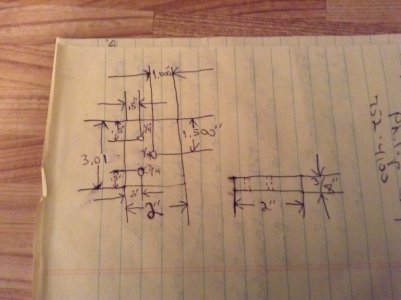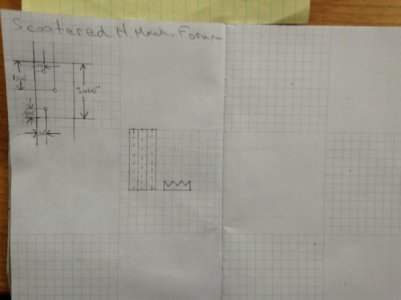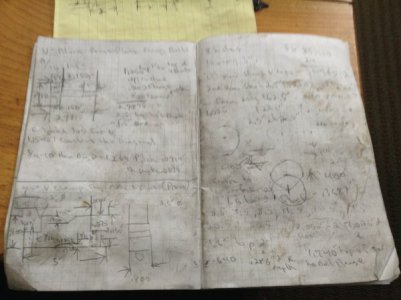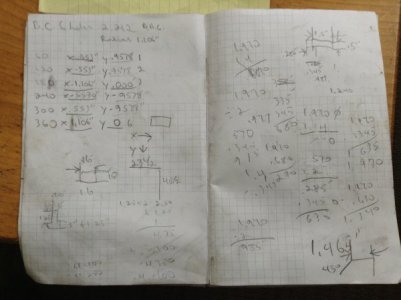I ll tell ya what. I like the fact you put yourself out there and want to learn. I guess I am half old grumpy maybe? Doesn t matter I want to help you and would like to encourage you. We are on your side. Maybe we or I need to step up as I am half old and grumpy. You have your life ahead of you and we all would like you to be successful so I thinks it s best to encourage you and throw everything out above and take it all with a grain of salt. I will help you! I ll donate some time and material. Now from you all I ask is to try. Forget cad/cam and your computer for this project. Learn the basic skills. It will make you better at cad/cam. It s much better to struggle to understand something then to just get the answer. When you troubleshoot those basic skills come to surface.
Let s pretend you walk in my shop tomorrow and would like me to (Remember It s a shop that put s food on the table) do some work for you. Don t touch your computer. Were doing this old school. Grab a pencil and a pc. Of paper and do your best to draw a top view and a side view. We ll go from there. I am a mile from the Maine border so no big deal to send it to you.
Put it on paper. Take a pic. And post. We could all help or if you d rather send me a private message but I may learn something too! so how do feel about putting the picture in the thread. You already showed you have courage!
Here is some chicken scratch. A very rough sketch but just to give you an idea. Something like this I can go and cut my material. No math to work out for spacing and depth of cuts. Time cost money.
Well, dang. I was just about to delete myself from this forum because I don’t like being bullied. And here you come along to restore my faith in mankind. Thank you.
I’ve drawn up a drawing, (I’m sorry but it’s in my computer. I feel like I do better with it than doing it by hand) and it’s going to be Mark 1, Revision 0 for this exercise. I know I am going to have to redraw the thing, and I don’t care. I have my back up now, and I’m just not going to let this lack of knowledge and understanding defeat me. I’ve never done that before, and I don’t intend to start now. I promise, the next one will be hand done, as you asked.
I completely agree with you that it’s better to have to work for it than to be given an answer, and I sure wish you’d tell my Calculus teacher that. She writes the problem on the board, and then the answer, and then won’t take any questions. I get told all the time, “You should already know that..." Well hell, lady… How am I supposed to know it if you’re not teaching it? And if I’m already supposed to know it, why am I sitting in this room watching you skip all the steps between the problem and the answer? I hate her. And so does half the class.
So, here’s the first version of my drawing. I think that in the interests of uniformity, and of not having to do extra work by shaving down one of the parts to .25” I’ve changed it to be the same as the other one, at .375” thick. That way, they can be made from the same piece of flat, mild steel bar stock. (See, I’ve been researching this steel materials thing!)
I’m still fuzzy on how to represent the longitudinal grooves, mostly because I don’t know what kind of bits or tools would be used, but I hope I’m right in thinking that you as the machinist, would know that, and all I have to tell you is what they look like. Right?
Others have talked about needing drawings so I won't add to that except to agree that yes, you need a drawing if you want a machinist to talk to you about it.
Tolerances: Not something you worry about with woodworking, but with metalworking it's important. Your half inch hole: Most drills cut slightly oversize. If you use your Forstner bit to drill a half inch hole, it'll be a half inch plus a little. It's not your eyes that can't tell the difference, you probably don't have measuring tools accurate enough (most woodworkers don't). But because that half inch hole is probably a bit oversize, your half inch dowel will slip into it... though it may be a bit tight so you have to tap it in. But wood is forgiving.
Now take a half inch hole in metal. Say you dimension it as such, .500 diameter. Typical hole tolerances might be plus or minus five thousandths (±.005). Say your hole comes in undersize at .495 (.500-.005). You want to put a bolt into it that comes in a bit oversize at .505. No way it's gonna fit even with a BIG hammer. To avoid that, you dimension the hole a bit oversize, a typical drilled hole for a bolt will be 1/64-1/32 (.016-.031) oversize. That's what you need to specify on your drawing, not just 1/2". Going oversize on the holes also allows for the holes being slightly out of position, i.e. if they don't quite line up the bolt will still fit through the overlap area. On the other hand, if you make the holes too oversize, the fit may be too sloppy causing other problems. Since none of us here know what your final intended use is, there's no way we can advise you on what an appropriate fit or tolerance would be. But if you specify too-tight tolerances, it's going to cost you more.
Well, nobody ever managed to get that across to me until now, and it’s something I never understood that the bolt size might be something other than what it says it is. Ignorant stupidity on my part? Just me being naive? That explanation of bolts and their actual measurements, and holes with their measurements really tells me that there are a lot of other details I simply never even thought about, and didn’t think I had to think about. And the worst thing is, all these people on this forum were trying to tell me that I had to worry about this, and I just didn’t see what they were saying. They were all saying this, plainly and right out in the open, and I just didn't see it.
I owe some people an apology for being a jerk about it. Thank you for taking the time to explain it in a way that I could understand it. And I hate Calculus even more now, because that witch could take ten seconds to turn the light on for half the class like you did. We’re trying to teach ourselves how to do it because she won’t.
From what I’ve seen in my research, I don’t have to use a 3/8” bolt. I could use a 7/16” bolt at .452” shank diameter, and still put it through a .50” hole, if the hole is specified to be that at a minimum. The company webpage I looked at states “All dimensions are maximum, with +/-.005” tolerance. If I’m right, that means the maximum shank diameter could be .457” and the minimum could be .447”
Now I see where tolerances come into play. Making things out of wood, well, the tools already take all of this into account, don’t they?
Geez, I feel like a total moron now. Everyone, I really apologize for being a typical know it all on this one. Wow, was I wrong. I apologize. I’ll shut up now and listen to the people who know more. That’s why I came here.
So if I say a 1/2“ hole, with +/- .01” then the hole will be somewhere between .490” and .510” right? Because .457" is still smaller than .490” with room to spare. And there won’t be much wiggle room, the way I have the overall final “thing” in mind. It will be enough. It should work perfectly. I think. And even if the 7/16" bolt is too big, I can always fall back on a 3/8" bolt. It'll fit no matter what.
So, without further babbling on my part, here’s Mark 1, Revision 0.
Thanks.





